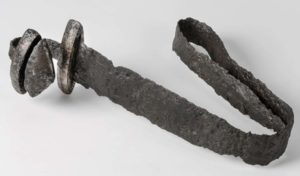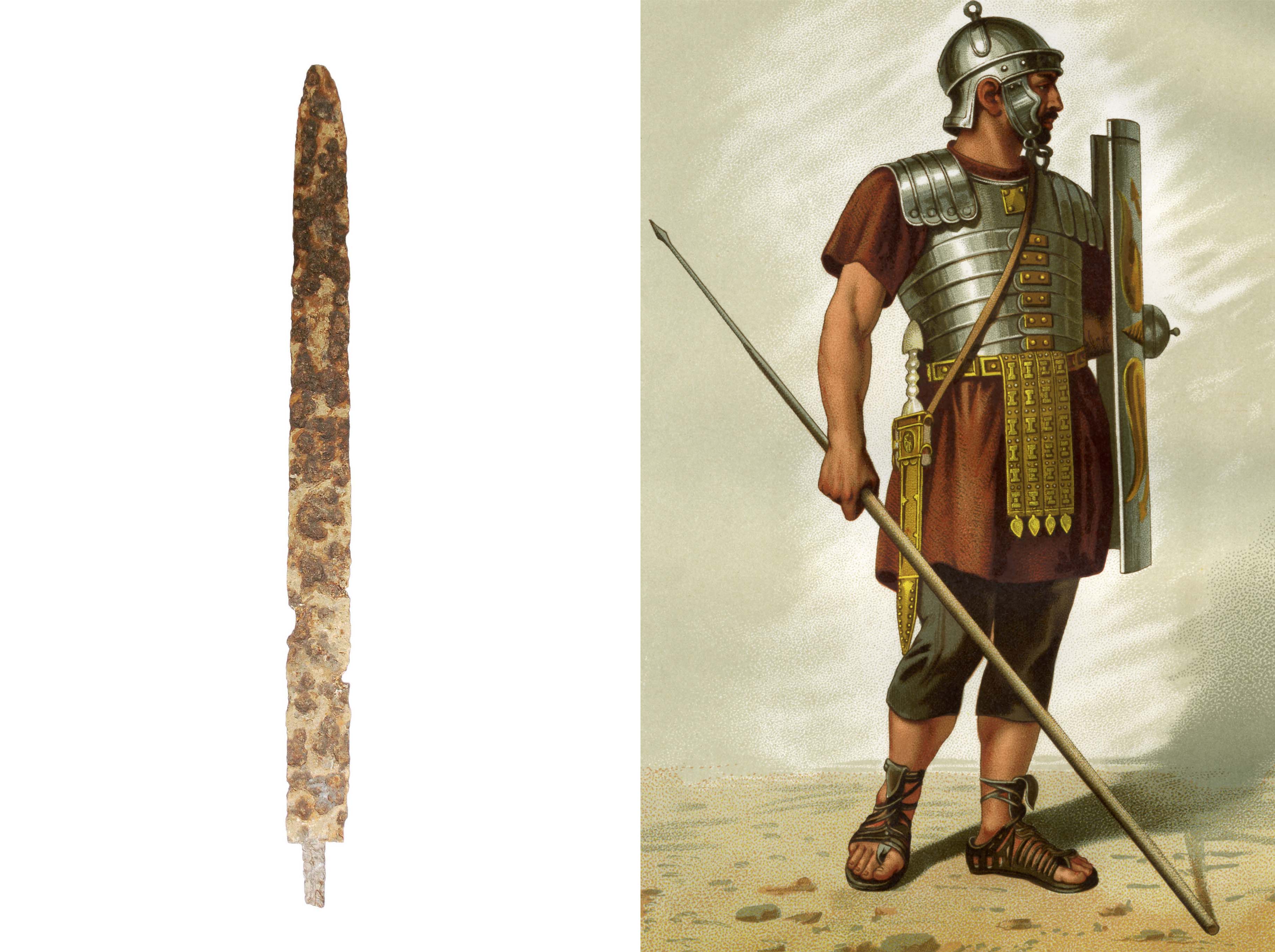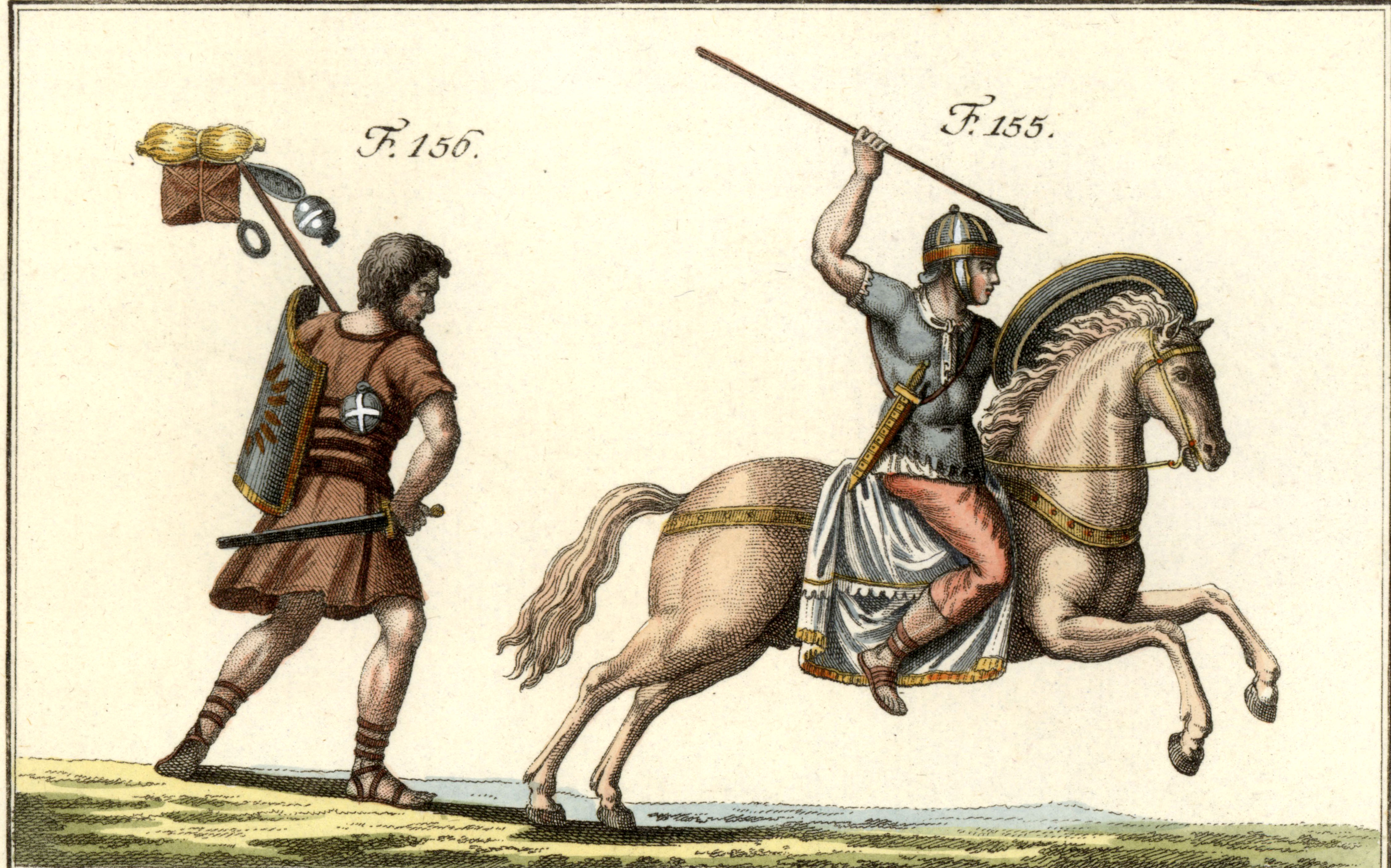Archaeologists excavating the grave of a Roman soldier in Thessaloniki, Greece, were surprised to discover a 1,600-year old sword, damaged in a pagan ritual, among the grave goods.
The iron spatha sword indicated that the deceased was a member of an auxiliary cavalry force in Rome’s imperial army. The prominent place of his arch-shaped grave—on the present-day site of the Sintrivani basilica—suggests that he was a high-ranking officer.
The unknown soldier in Thessaloniki was buried with other military objects, including a shield boss and a spearhead. His sword proved the most attention-grabbing find. The long spatha blade, a weapon typically used by cavalrymen, had been folded in a pagan ritual commonly known as “sword killing.”
In various regions throughout ancient times, swords and other weapons were believed to possess their own unique spirit and were often individually named. Perceived as animate objects, these weapons therefore had to be “killed” to unite them with their owners in the afterlife. Therefore, so as to “release the spirit” of a weapon upon its owner’s death, swords and spearheads were often bent in half or in circular form. Sometimes these “killed swords” were bent around burial urns.

This custom was practiced by many ancient peoples including the Greeks, members of Northern European tribes, the Celts and later the Vikings. The ceremonial destruction of grave goods was not uncommon in the ancient world—objects were sometimes destroyed as offerings during burials or to prevent their reuse.
However, the evidence of this pagan ritual is highly unusual given the grave’s location on the site of a former Christian chapel, according to researchers. Project co-researcher Errikos Maniotis told LiveScience that “Romans didn’t practice [the sword killing ritual], let alone when the new religion, Christianity, dominated, due to the fact that this ritual [was] considered to be pagan.”

The officer is believed to have been an auxiliary cavalryman. Auxiliaries in the Roman army were often recruited from “barbarian” tribes, such as from regions in Northern Europe. These auxiliaries proved powerful but often dangerous allies prone to treachery against Roman forces. One of Rome’s most famous auxiliary officers was the Germanic tribesman Arminius, who used his military education to wage war against his former Roman masters.
The evidence of the sword ritual at the burial site indicated that although the unknown officer had “embraced the Roman way of life and the Christian religion, he hadn’t abandoned his roots,” according to Maniotis, who added that researchers hope the find will “shed light” on the “presence of the community of foreign mercenaries” in the area. MH





